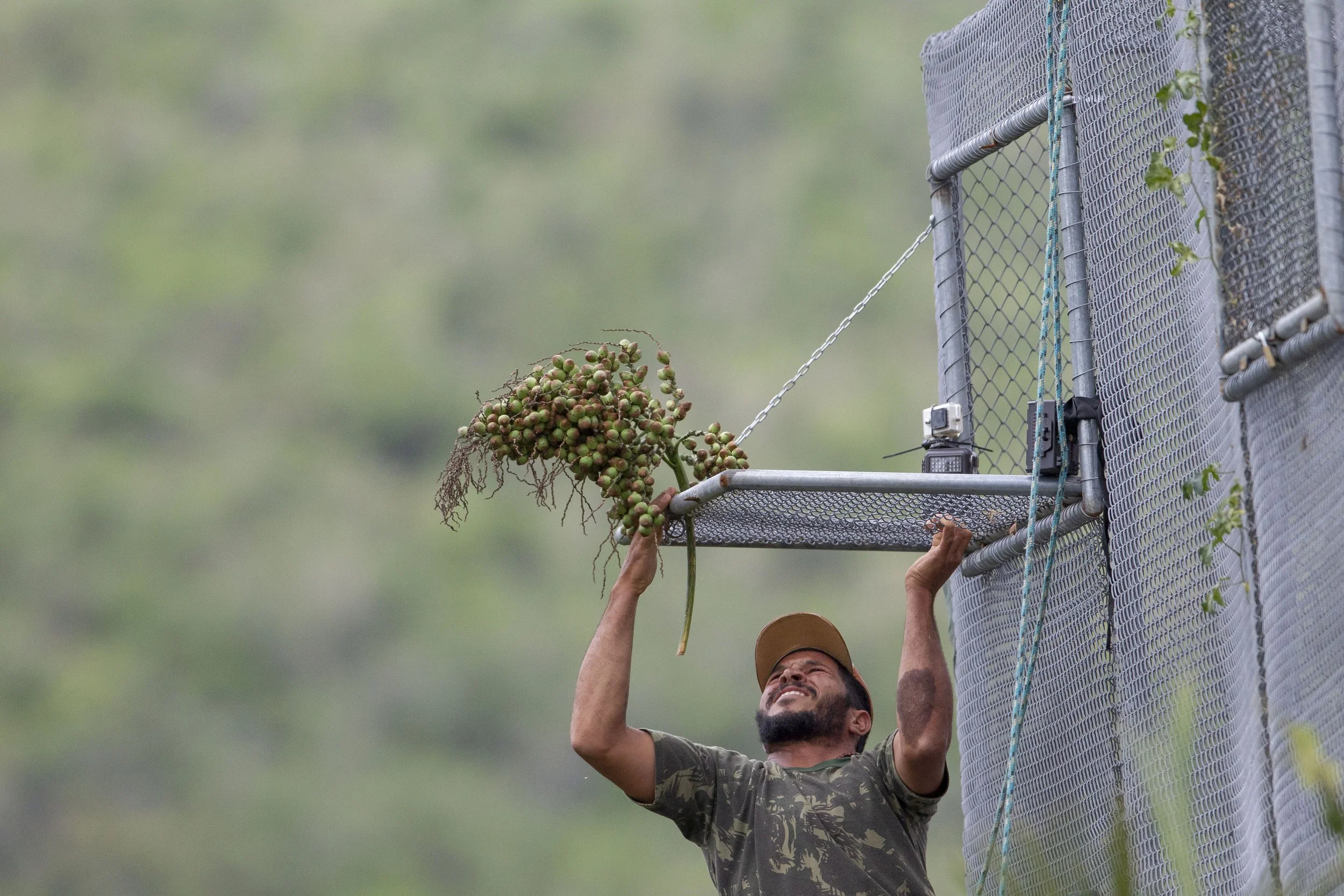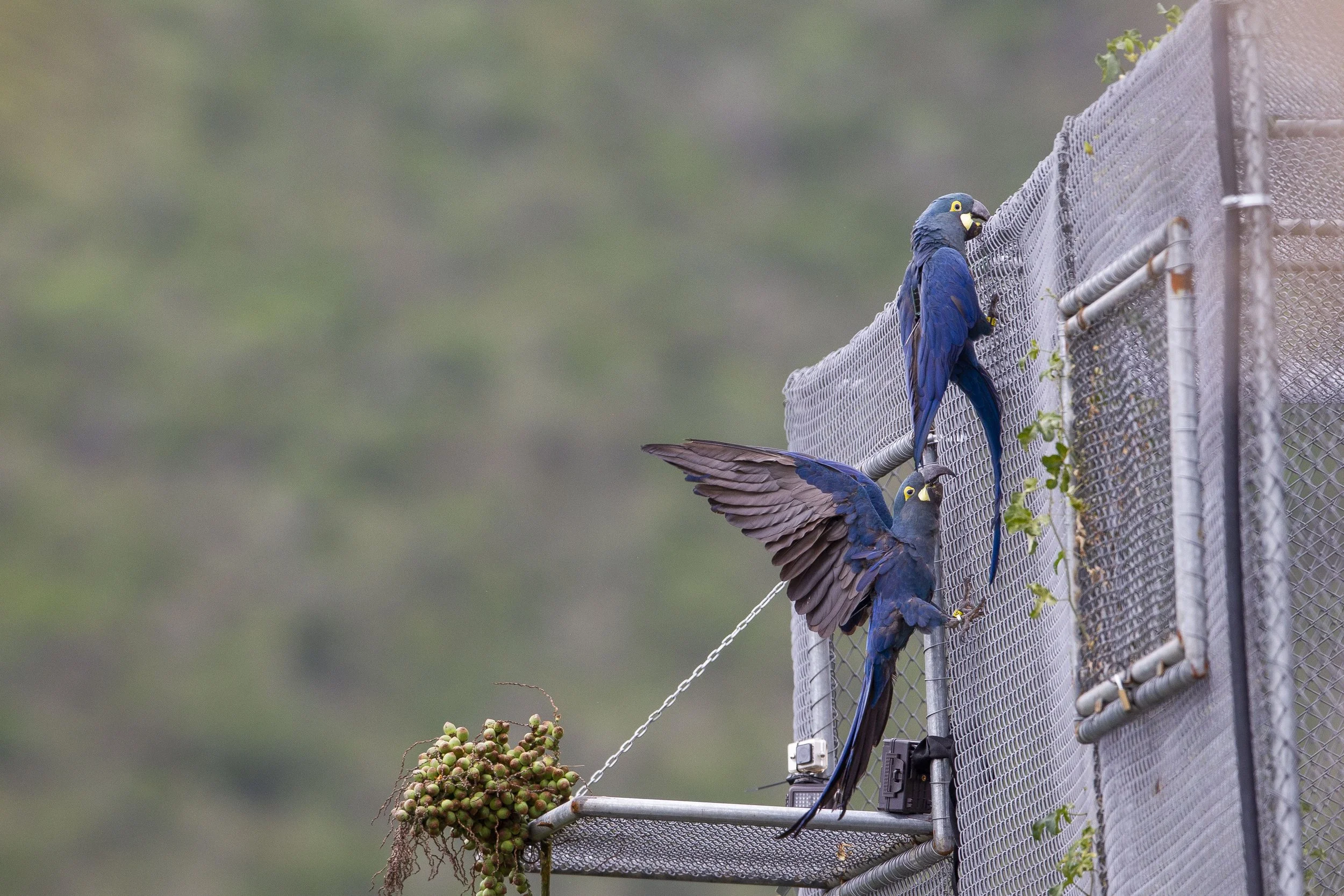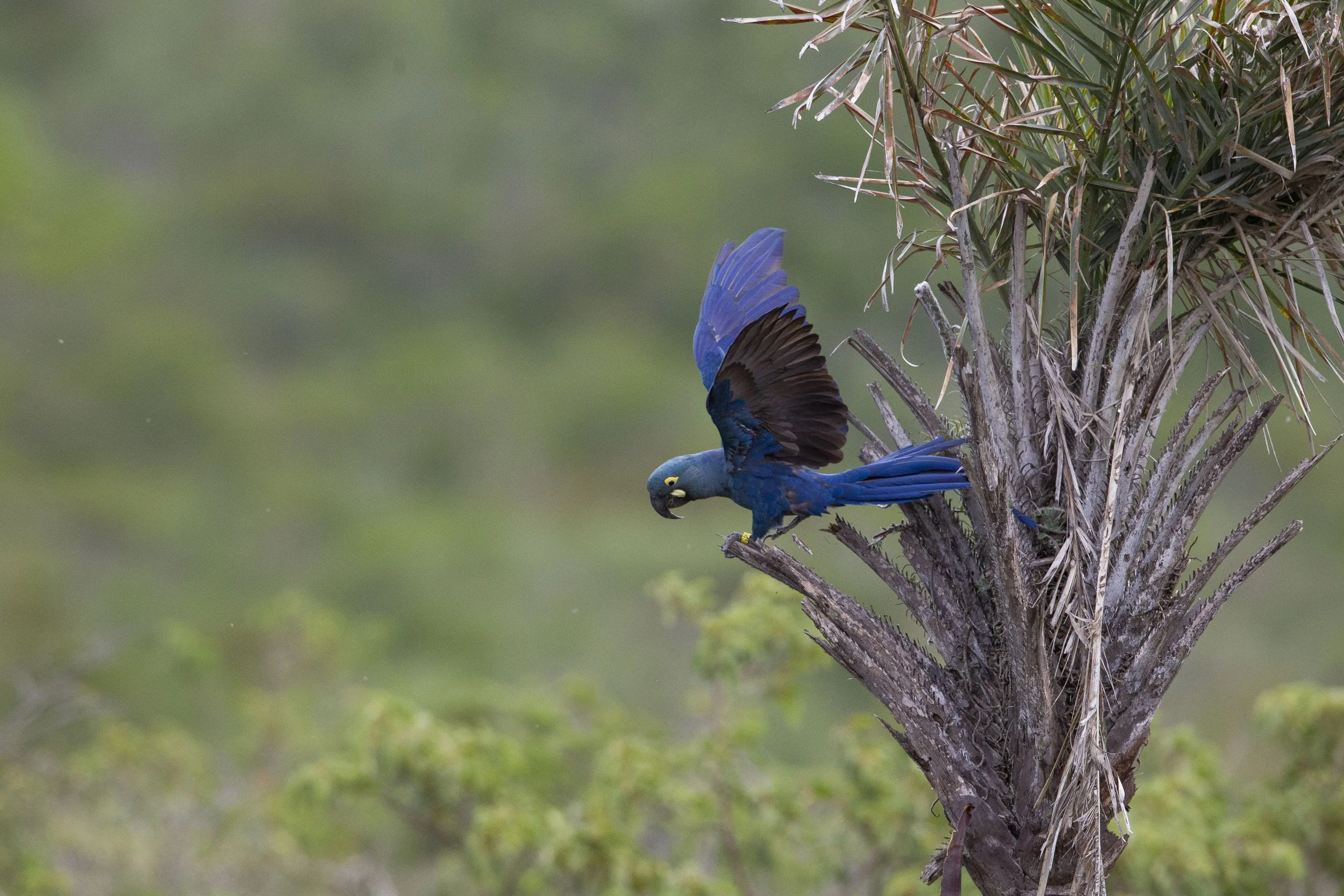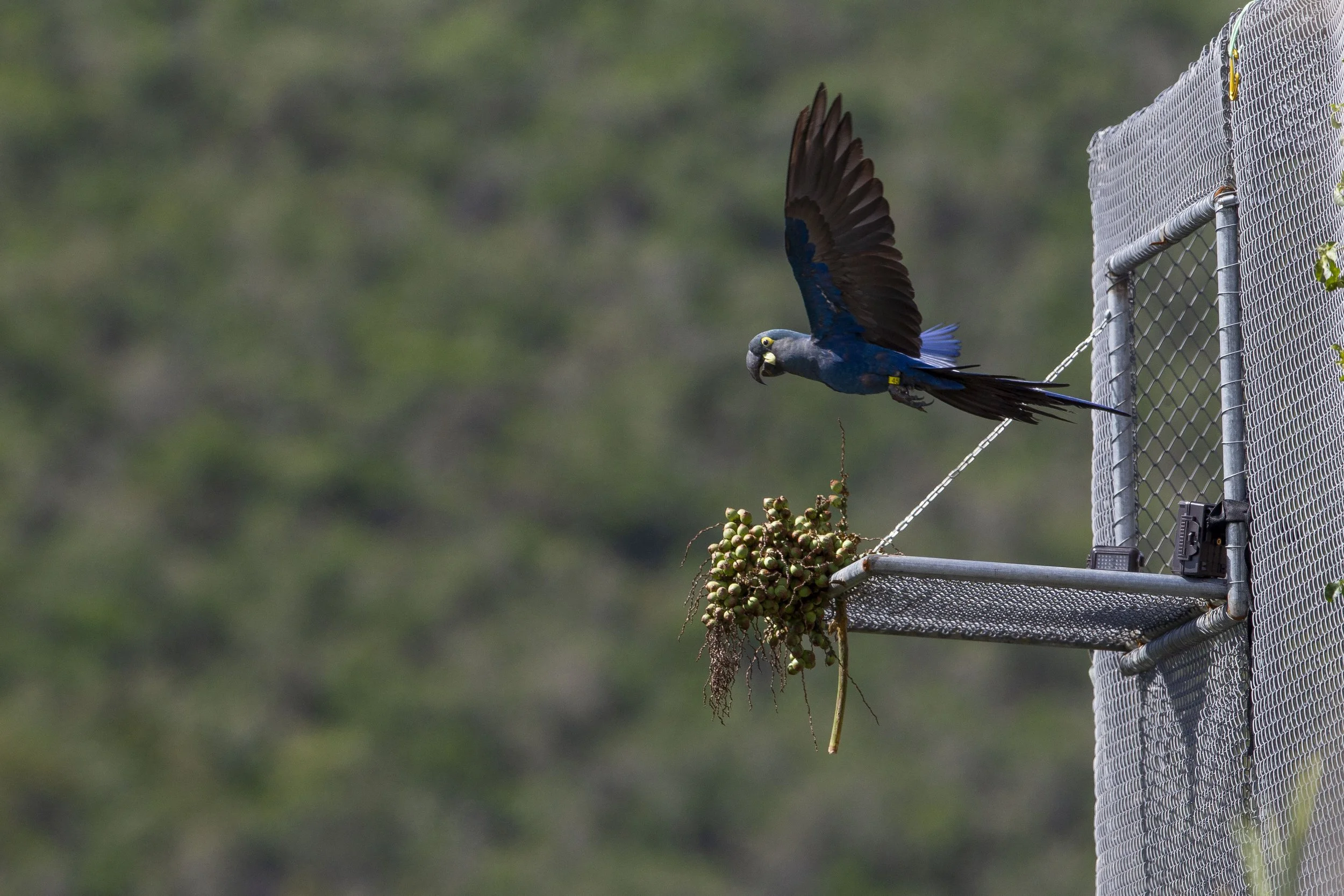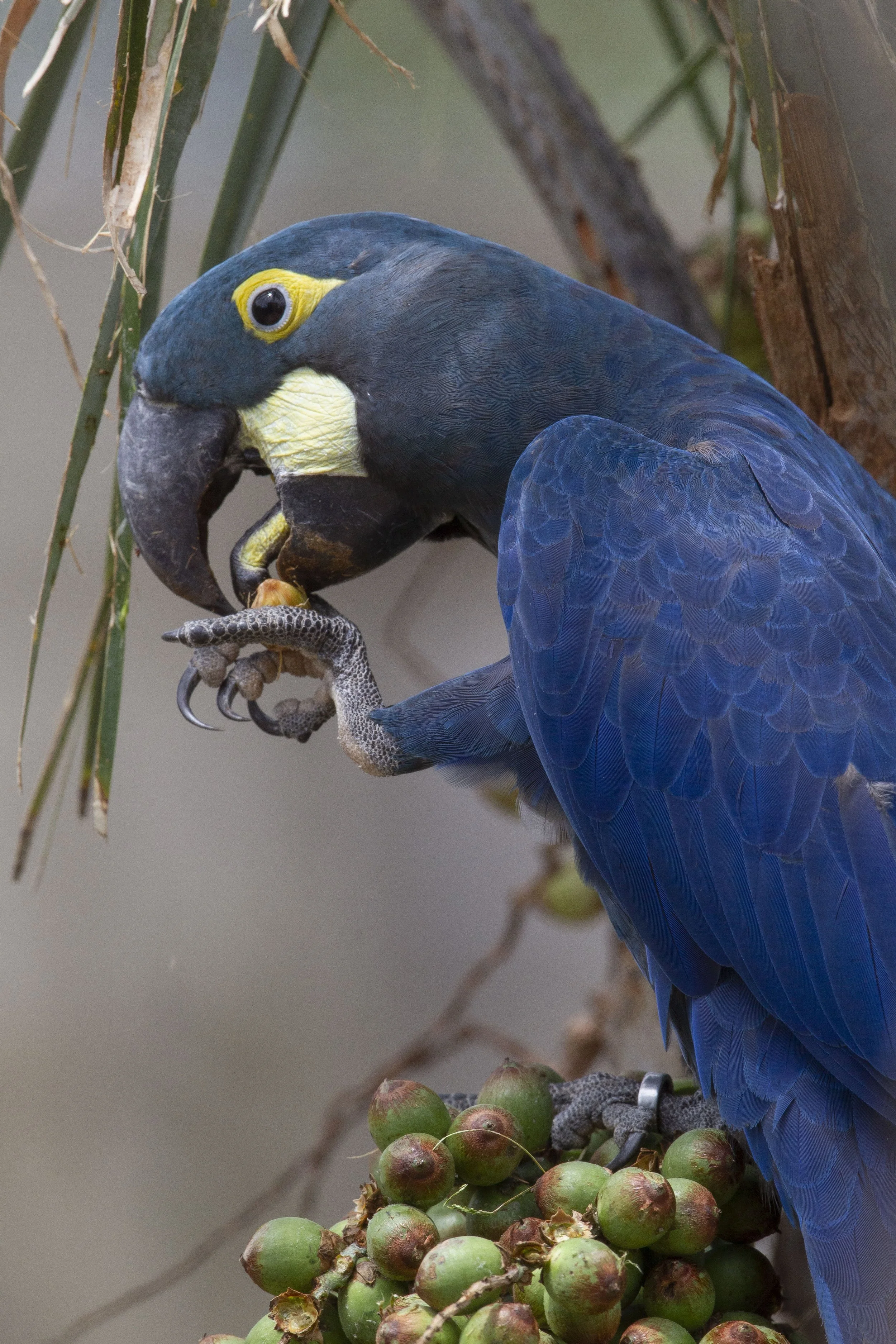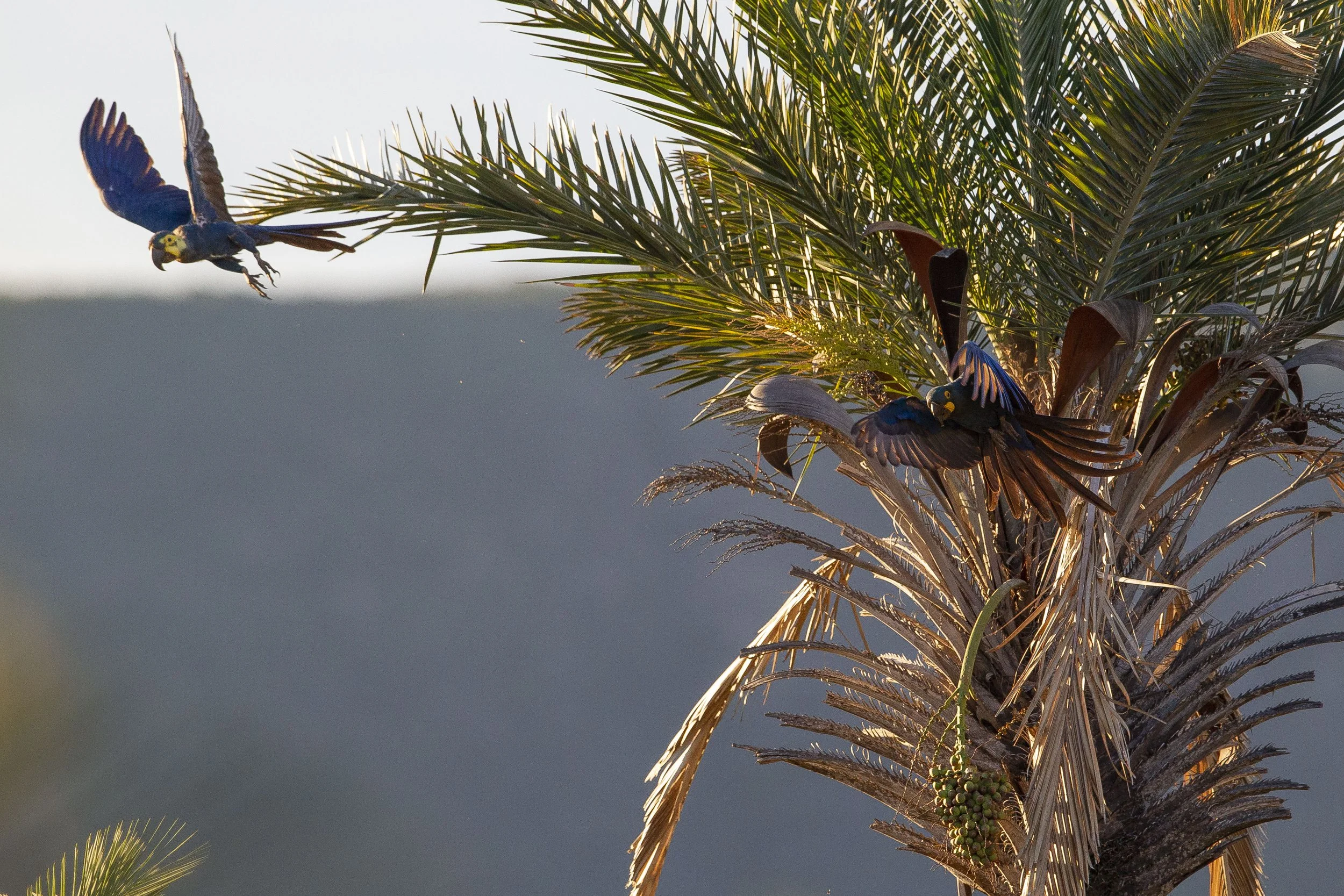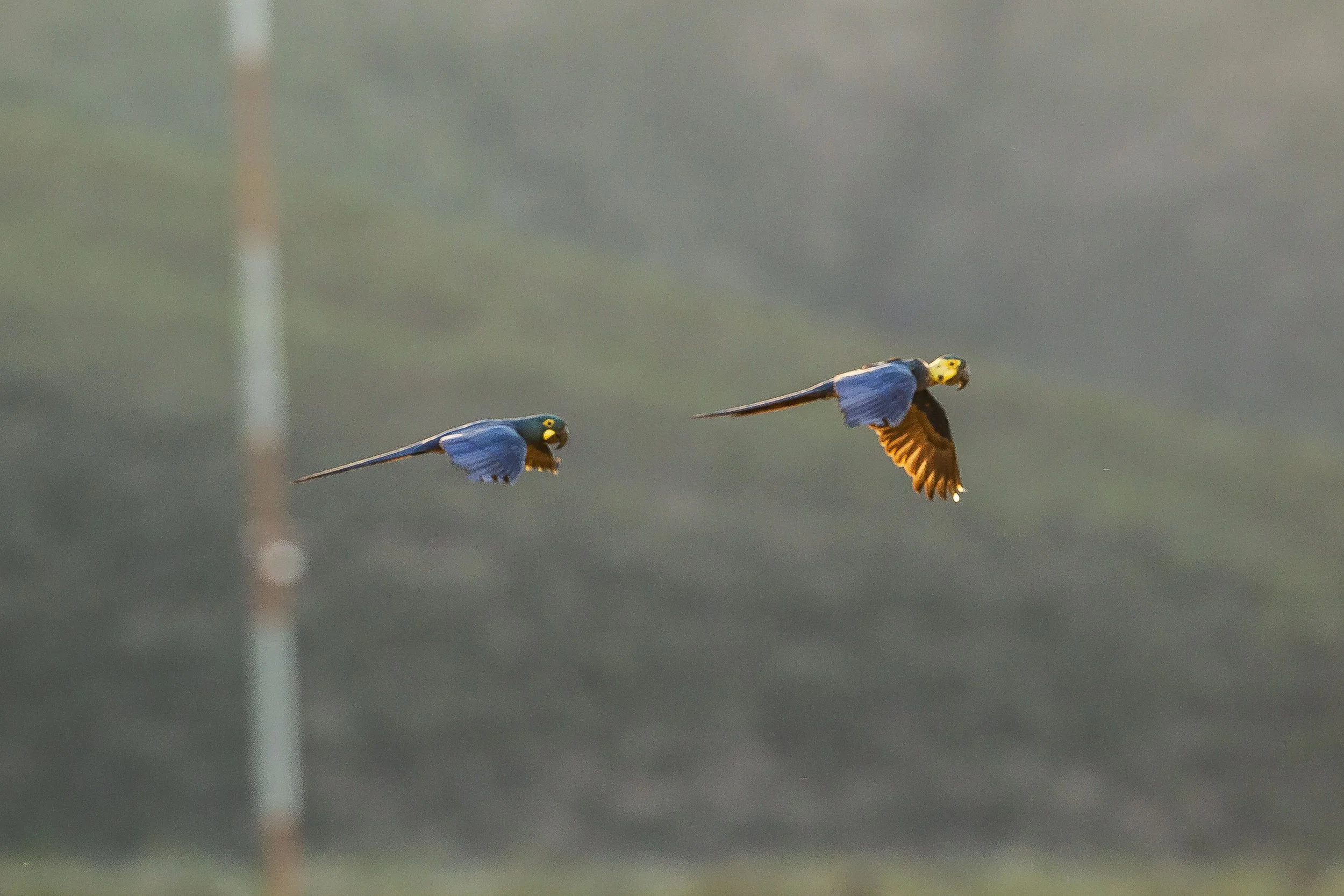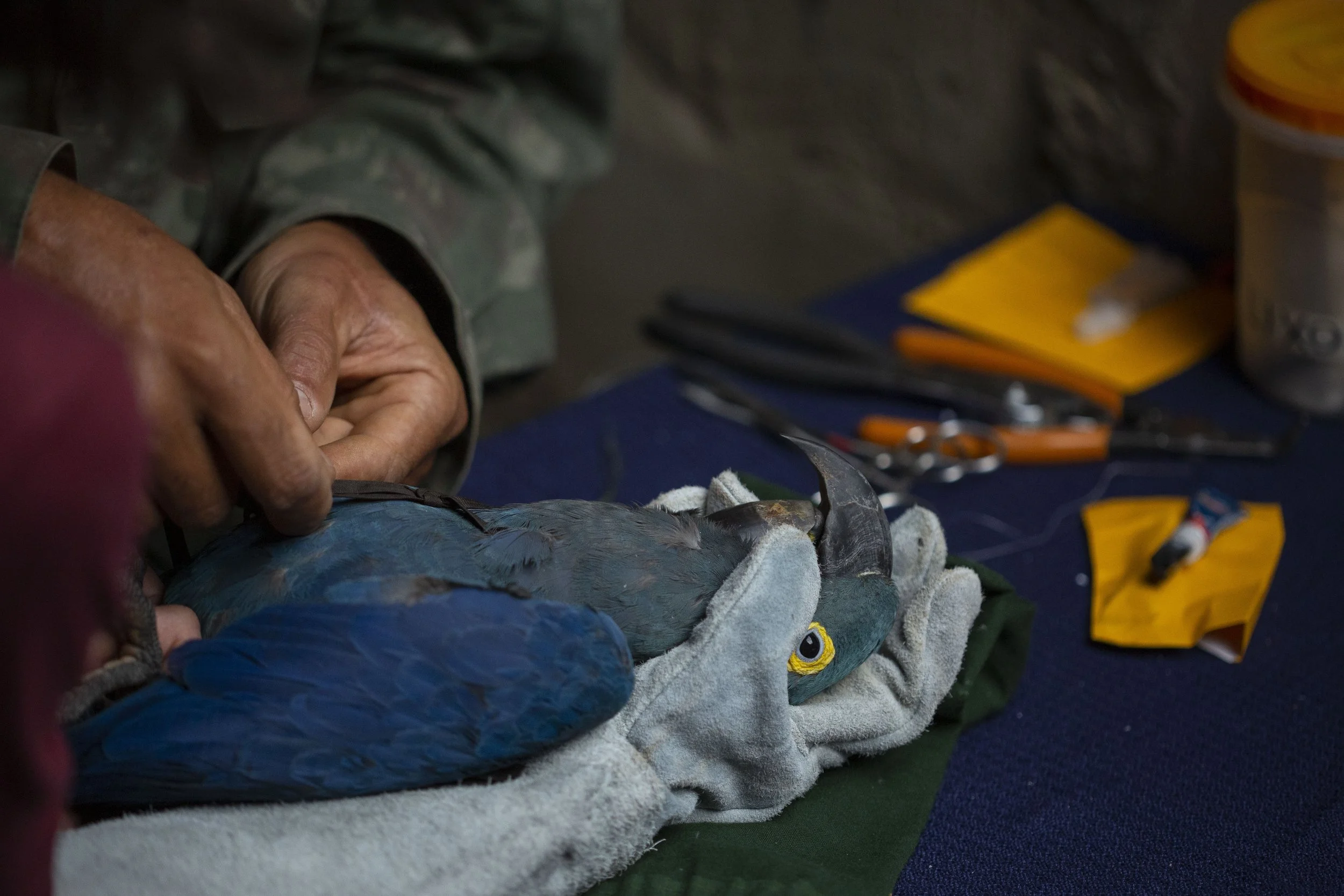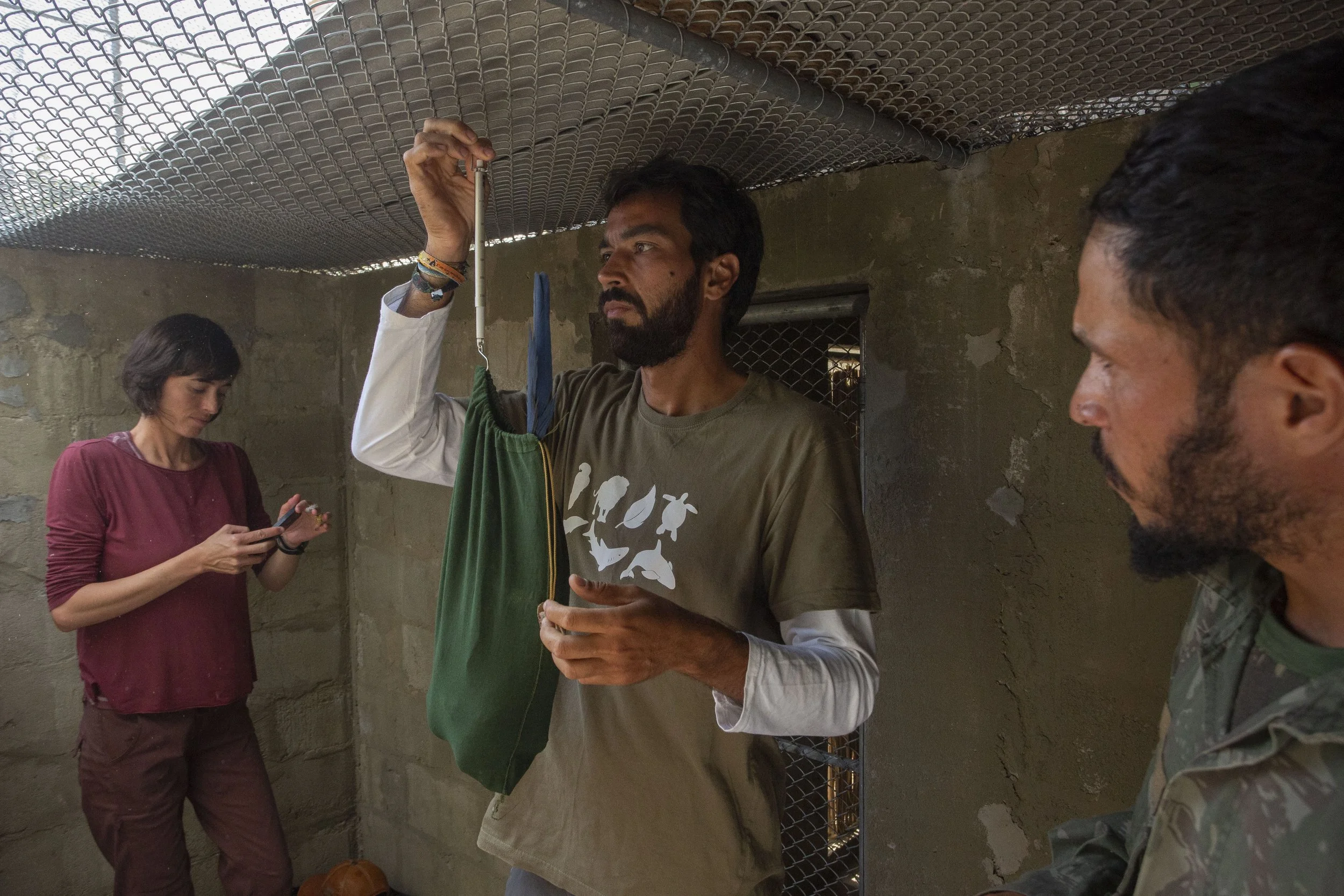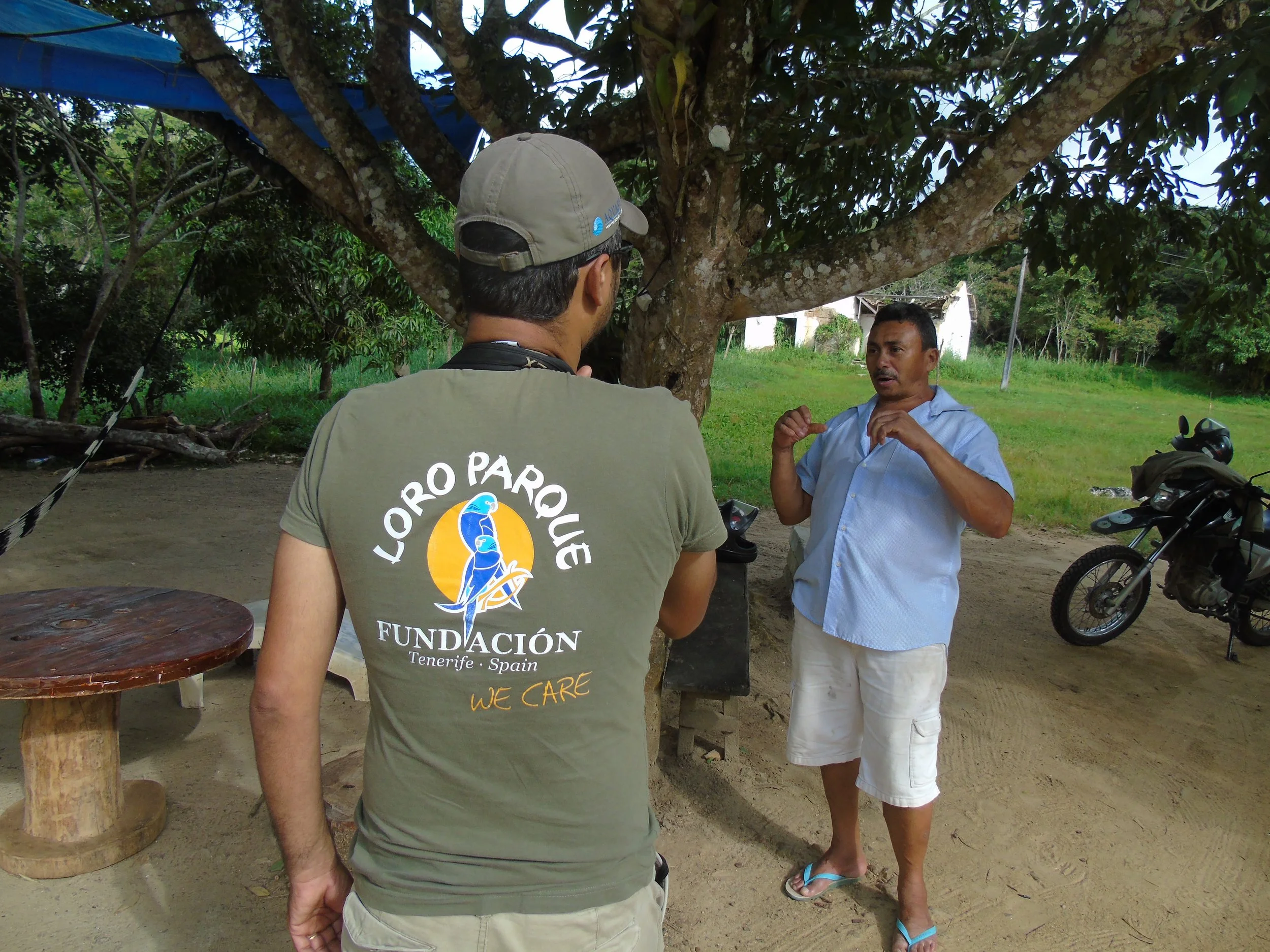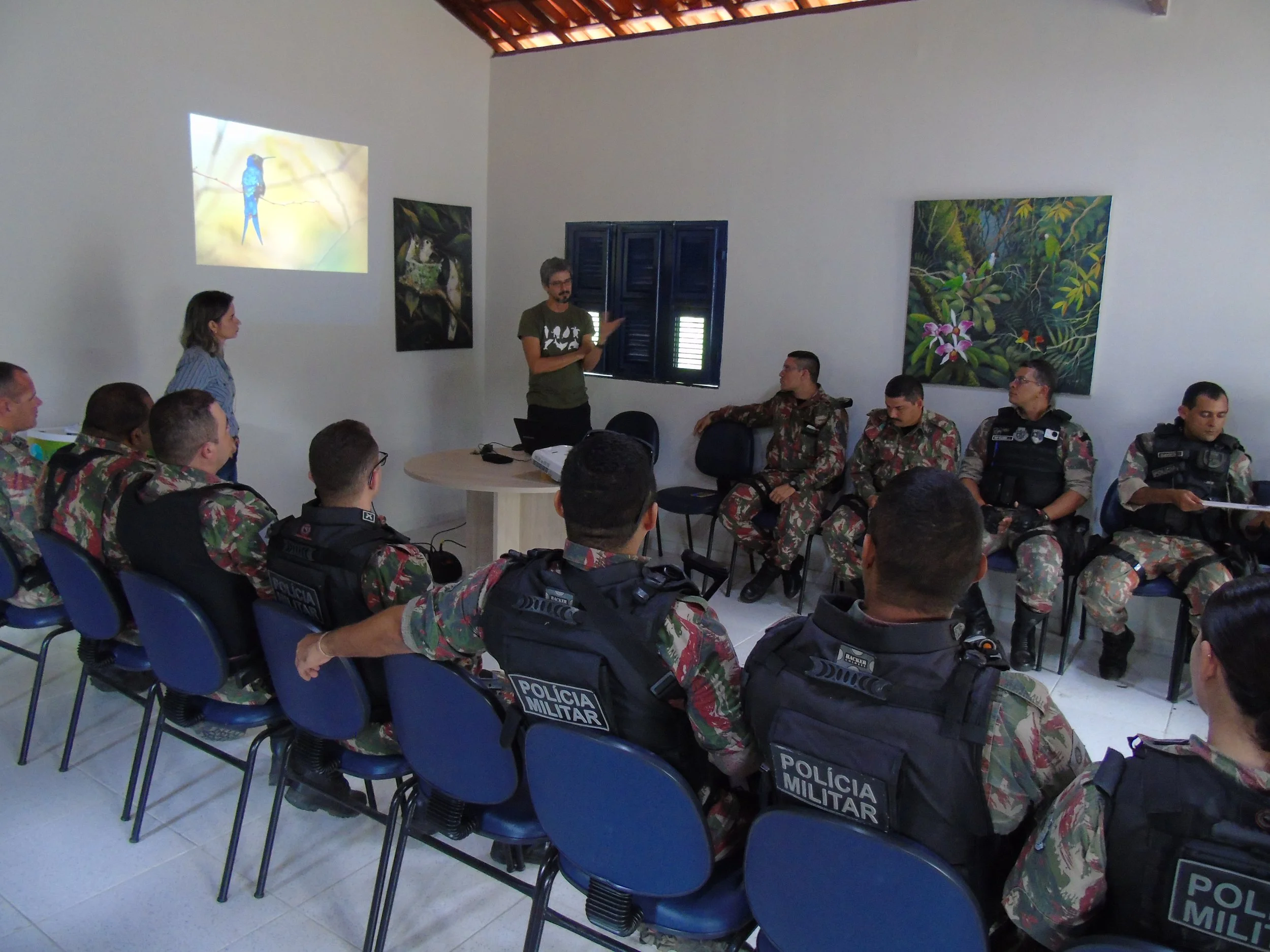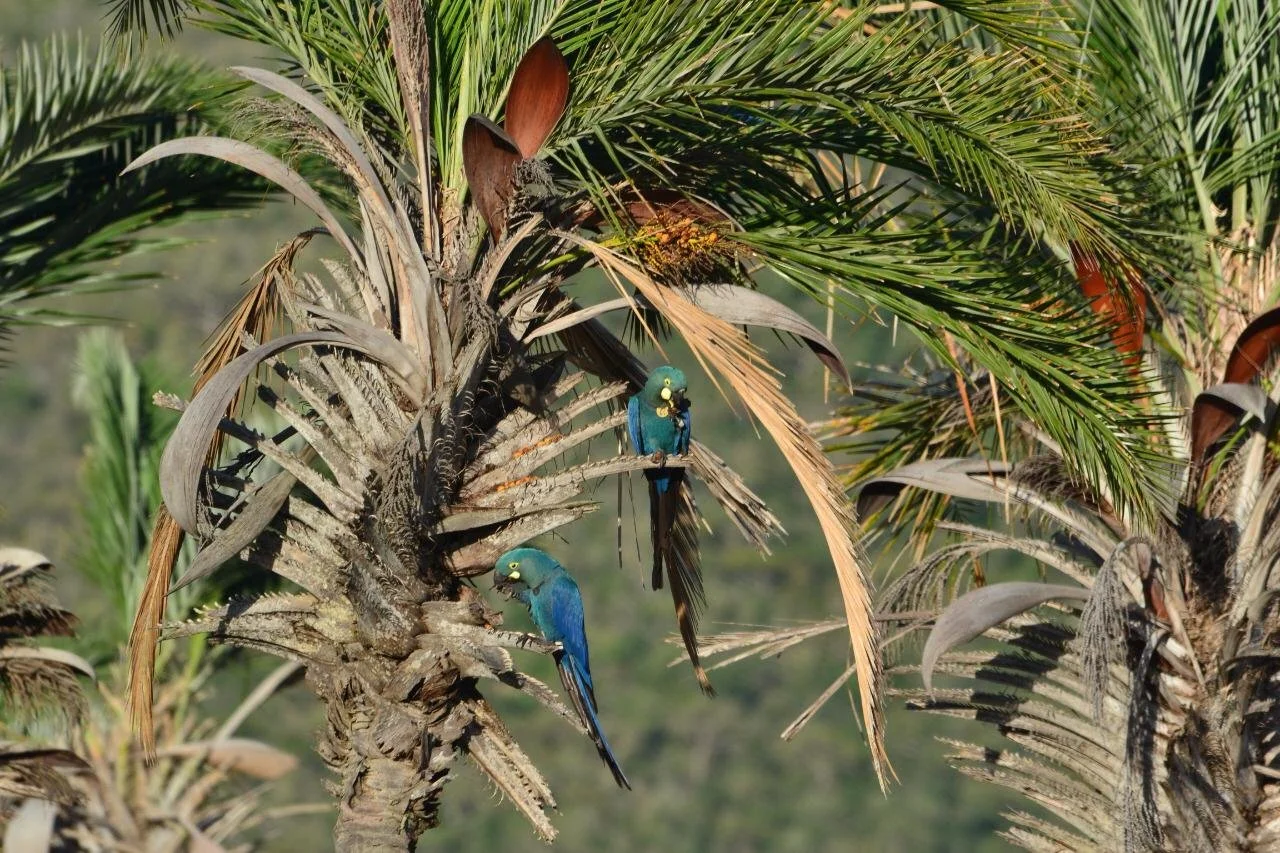Lear's Macaw Reintroduction
Blueprint
ASSESS
In 1983, the global population of Lear's Macaw was estimated at 60 birds. A second measurement carried out in 2014 revealed a more comprehensive picture, indicating the total population of the species to be around 1,300 birds, distributed across seven districts in Bahia, Brazil. Since the implementation of conservation measures in the 1990s, in particular protection from illegal take at breeding sites, the Lear’s Macaw population has been steadily recovering. Its IUCN Red List of Threatened Species status changed from Critically Endangered in 1994, to Endangered in 2009, although a portion of this increase may be attributed to improved survey methods.
PLAN
Despite the in situ activities undertaken in the early 2000s, such as the colonisation of formerly vacant nesting sites, conservation progress was slow and continuously threatened by increasing habitat destruction and the disappearance of essential food sources. Thus, the Brazilian government decided to develop complementary actions to establish an ex situ captive population of macaws.
In 2006, the Brazilian Instituto Chico Mendes de Conservação da Biodiversidade (ICMBio) requested the collaboration of Loro Parque Fundación (Tenerife, Spain), known for successful breeding of Spix Macaw, to develop an optimum protocol for breeding this species. Two pairs of macaws were exported to Loro Parque Fundación to form the founding research population for this effort. Simultaneously, under the assumption of successful breeding, the protocol called for an evaluation of procedures for successful reintroduction of future captive-bred individuals, using the IUCN Guidelines for Reintroductions and Other Conservation Translocations. By 2012, ICMBio published the revised National Action Plan for the Conservation of the Lear's Macaw, following the IUCN SSC Conservation Planning Specialist Group’s One Plan Approach, that combined in situ conservation measures in natural habitats with coordinated ex situ conservation breeding projects under human care.
ACT
Breeding began six months after the arrival of the two pairs of Lear’s Macaw at Loro Parque Fundación. Since then, more than 40 birds have been born in Tenerife. In 2016, nine Lear’s Macaw born and raised in Tenerife were shipped to their native Brazil to be reunited with a captive cohort in Brazil for breeding. Loro Parque Fundación developed specific protocols for the maintenance and breeding of Lear’s Macaw, for example, constructing artificial rock surfaces that imitate the cliffs where the parrots breed in their native habitat. Breeding techniques were tested and optimised over many years with great success. These protocols were then transferred to Brazilian zoos and breeding centres for implementation.
In 2018, the first group of six Lear’s Macaw was reintroduced in Brazil by ICMBio, Qualis Consultoria Ambiental, and with the support of the Estación Biológica de Doñana (part of the Spanish Scientific Research Council). As a part of the project, the team in Brazil developed a soft-release programme, lasting several months, for the captive-bred individuals in the Brazilian caatinga (a shrubland/thorn forest). This programme provided valuable information on how to successfully readapt the macaws, including preparing the birds to use wild resources and avoid predators. The palms near the release sites are stocked with large bunches of licuri fruits to prevent the macaws from flying great distances in search of food during their first experiences in their natural habitat. Dummies that mimic predator silhouettes, as well as recordings of their characteristic sounds, are also part of the adaptation process that proved necessary for a successful release. Macaw conservation measures also include continuous monitoring and surveillance of the wild birds.
Results
The ex situ programme has been a complete success, by establishing an optimal breeding protocol and achieving the highest breeding rate for this species worldwide. By 2021, 17 Lear’s Macaw raised under the care of Loro Parque Fundación have been returned to Brazil. Nine individuals remain in captive care for additional breeding per the objectives of the National Action Plan for the Conservation of the Endangered Lear’s Macaw and eight have been released to the wild.
In the field, work continues on research of the macaw’s ecology, mitigation and restoration efforts with local farmers, and expansion of their range into historical habitats. Some of this habitat has high wind energy potential, and collaborations have been formed between researchers, the Brazilian environmental agency, and the private sector to apply strategies and compensatory measures to protect the birds and support population expansion. One of these measures is the implementation of a release project to restore a historical population at Boqueirão da Onça, which is a project fully funded by wind energy companies.
©Grupo de Pesquisa e Conservaçao da Arara-Azul-de-Lear
Collaborations
Major
Partners
Instituto Chico Mendes de Conservação da Biodiversidade (ICMBio)
Loro Parque Fundación
Qualis Consultoria Ambiental Ltda., Lear’s Macaw Research and Conservation Group
Additional
Contributors
Estación Biológica de Doñana (Spanish Scientific Research Council); Museum of Zoology of São Paulo University, Eco-Movement Lab from Biosciences Institute of São Paulo University, Instituto Arara Azul, N.G.O, Intituto Espaço Silvestre (Brasil), MaxPlank Institute of Animal Behavior (Germany); Veterinary support team of the Lear’s Macaw Rescue Program
Donors
ENEL GREEN POWER BRAZIL
Additional Resources
Content Updated as of 8/27/2020


